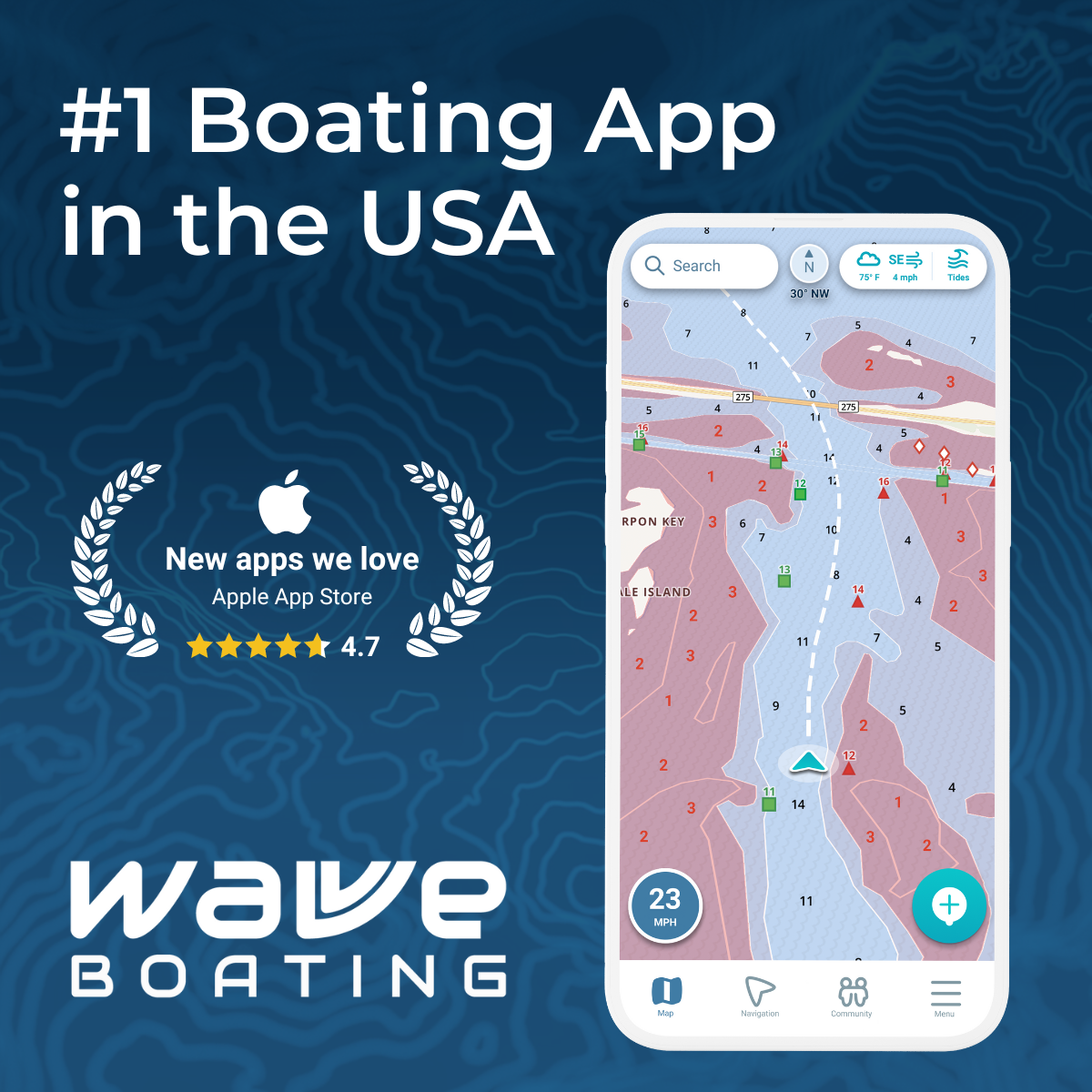
The Engine Cutoff Switch (Kill Switch) Lanyard Is Important For The Operator To Wear Because? Get the answer to this boating test question and more in our guide!
Understanding the significance of the engine cutoff switch (kill switch) lanyard is crucial for both new and experienced boaters. Whether you’re studying for your boater licensing and certification tests or simply looking to enhance your boating safety knowledge, this guide provides the most up-to-date and comprehensive information. Wearing the kill switch lanyard is not just a regulatory requirement in many regions; it is a vital safety measure that can prevent serious accidents on the water. Here at Wavve’s Boating Test Guide, we are committed to being your go-to resource for all boating test questions and safety tips. Dive in to learn why the engine cutoff switch lanyard is essential for every boat operator.
Table of Contents
- The Engine Cutoff Switch (Kill Switch) Lanyard Is Important For The Operator To Wear Because:
- What is the best way to avoid being run over by your own PWC or motorboat?
- An engine cut-off lanyard helps to reduce the risk of what?
- What is the purpose of a lanyard attached to an engine cut-off switch?
- What is the main function of an engine cut-off switch?
- What is the best way to avoid being run over by your own PWC?
- What is the purpose of the safety lanyard on a PWC?
- What does an automatic cut-off lanyard do when properly attached to a PWC operator?
- Conclusion
The Engine Cutoff Switch (Kill Switch) Lanyard Is Important For The Operator To Wear Because:
The engine cutoff switch, commonly known as the kill switch, and its accompanying lanyard are vital safety devices that every boat operator should use. This lanyard attaches to the operator and ensures that if they are thrown overboard or move too far from the helm, the engine will automatically shut off, preventing the boat from continuing to run out of control. Wearing the kill switch lanyard can prevent the boat from becoming a runaway hazard, significantly reducing the risk of injury or damage to other vessels and people in the water. This simple yet effective tool is a crucial component of safe boating practices and is often required by law.
In Florida, the requirement for boat operators to use an engine cutoff switch (kill switch) lanyard became law on January 1, 2021. This legislation mandates that operators of boats equipped with a kill switch must wear the lanyard to enhance safety on the water, ensuring that the engine will stop if the operator is ejected or falls overboard.

(image provided courtesy of Boat-Ed)
In addition to understanding why a engine cutoff switch is important, you will be expected to answer the following questions on your boating test. Here are some other scenarios you should be aware of if your studying and interested in a boat cutoff switch.
What is the best way to avoid being run over by your own PWC or motorboat?
The best way to avoid being run over by your own personal watercraft (PWC) or motorboat is to always use an engine cutoff switch (kill switch) lanyard. Here are key steps to ensure safety:
-
- Wear the Kill Switch Lanyard: Always attach the lanyard to your wrist or life jacket. This will immediately shut off the engine if you are thrown from the vessel, preventing the boat from running over you.
- Stay Seated and Maintain Control: Remain seated and keep a firm grip on the handlebars or steering wheel, maintaining control of the vessel at all times. Avoid standing or making sudden movements that could unbalance you.
- Reduce Speed in Rough Conditions: Slow down in rough water, congested areas, or when making sharp turns to prevent losing control.
- Avoid Alcohol: Do not operate the PWC or motorboat under the influence of alcohol or drugs, which impair your judgment and reaction time.
- Be Aware of Your Surroundings: Always be vigilant of other vessels, swimmers, and obstacles in the water to avoid sudden maneuvers that could cause you to lose control.
- Proper Training: Take a boating safety course to learn best practices for handling your vessel and responding to emergencies.
An engine cut-off lanyard helps to reduce the risk of what?
An engine cut-off lanyard helps to reduce the risk of being run over by your own vessel, uncontrolled vessel operation, further injuries, and environmental damage by immediately shutting off the engine if the operator is ejected or loses control. Keep an eye out for any of these answers in multiple choice questions on your boater exam:
- Being Run Over by Your Own Vessel: If you are thrown overboard, the lanyard will immediately shut off the engine, preventing the vessel from continuing to move and potentially running over you.
- Uncontrolled Vessel Operation: The lanyard ensures that if you lose control or are ejected from the vessel, it will not continue to operate without an operator, reducing the risk of collisions with other boats, obstacles, or people in the water.
- Further Injuries: By stopping the engine, the lanyard minimizes the risk of the vessel causing additional injuries to you or others in the vicinity.
- Environmental Damage: An uncontrolled vessel can run aground or crash into sensitive marine environments. The lanyard helps prevent this by stopping the engine and allowing the vessel to drift to a stop.
What is the purpose of a lanyard attached to an engine cut-off switch?
The purpose of a lanyard attached to an engine cut-off switch is to automatically shut off the engine if the operator is thrown overboard or loses control, preventing the vessel from running uncontrolled and reducing the risk of injury or accidents.
What is the main function of an engine cut-off switch?
The main function of an engine cut-off switch is to stop the boat’s engine immediately if the operator is ejected from the vessel or loses control, thereby preventing the boat from running uncontrolled and reducing the risk of accidents or injuries.
What is the best way to avoid being run over by your own PWC?
The best way to avoid being run over by your own personal watercraft (PWC) is to always wear the engine cutoff switch lanyard, which stops the engine if the operator falls off or is ejected from the PWC, preventing it from continuing to operate and potentially causing harm. The kill switch on your jet ski is the easiest and safest way to prevent injury. These are standard on all jetski’s including waverunner and seadoo.
What is the purpose of the safety lanyard on a PWC?
The safety lanyard on a personal watercraft (PWC) serves as a crucial safety feature designed to stop the engine if the operator falls off or is ejected from the PWC. This prevents the PWC, such as a jetski, wave runner, or sea-doo from continuing to operate without a rider, reducing the risk of accidents and potential injuries.
What does an automatic cut-off lanyard do when properly attached to a PWC operator?
When properly attached to a PWC operator, an automatic cut-off lanyard ensures that the engine automatically shuts off if the operator falls off or is ejected from the PWC. This safety mechanism helps prevent accidents and injuries by stopping the PWC from operating without a rider.
Conclusion
The engine cutoff switch (kill switch) lanyard is a crucial safety device for PWC operators, ensuring that the engine shuts off in case of an emergency or operator ejection. By wearing the lanyard, boaters significantly reduce the risk of accidents and injuries, making watersports safer for everyone involved.
For the most comprehensive and up-to-date boat test guides, including essential information on safety equipment like the engine cutoff switch lanyard, look no further than Wavve Boating. We’re committed to providing the best resources to help boaters navigate the waters safely and confidently.
When you’re ready to hit the water, be sure to download the Wavve Boating App for easy-to-use navigation, directions to top boating destinations, and plenty of more tools to help you get the most out of your time on the water.
New to boating? Check out this article on how to drive a boat next!









